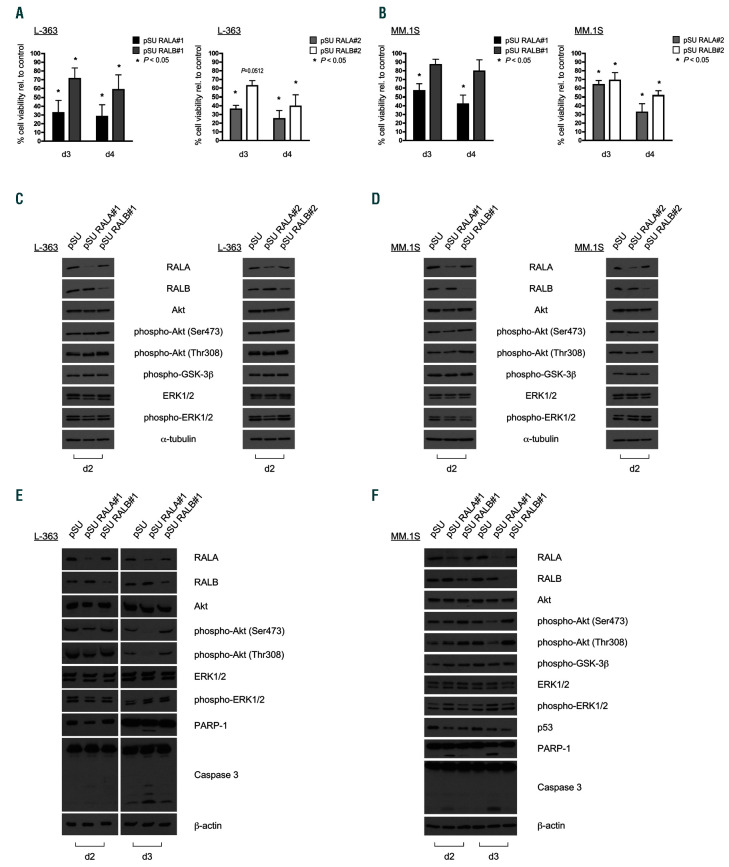Figure 2.
Effects of abrogation of RAL signaling with different small hairpin RNA expression vectors on multiple myeloma cell survival and signaling. RALA and RALB knockdown was achieved with two different small hairpin RNA (shRNA) expression vector constructs for each RAL isoform in L-363 cells (A) and MM.1S cells (B). Upon RALA knockdown, MM cell survival was significantly reduced 3 days and 4 days after electroporation. Similarly, RALB knockdown also reduced cell survival, but to a lesser extent than RALA depletion. Shown are mean values and standard deviation (SD) from three independent experiments. Percentages were calculated relative to the respective empty vector control. Cell viability was monitored by annexin V/PI staining. Exemplarily, Western blots of L-363 (C) and MM.1S (D) cell lysates show that RAS-dependent signaling in form of ERK1/2 phosphorylation and PI3K-dependent signaling illustrated by Akt and GSK-3β phosphorylation are not influenced by RALA or RALB knockdown 2 days after electroporation. (E) L-363 and (F) MM.1S cells were transfected with shRNA targeting RALA or RALB and purified cells were harvested after 2 and 3 days. Onset of apoptosis after RALA knockdown as indicated by cleavage of PARP 1 and caspase-3 was accompanied by reduction of phosphorylated Akt after 3 days, whereas after 2 days, signaling remained still unchanged. α-tubulin and β-actin served as loading control.

